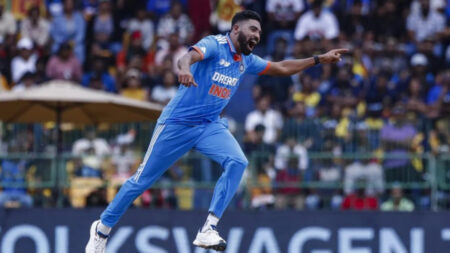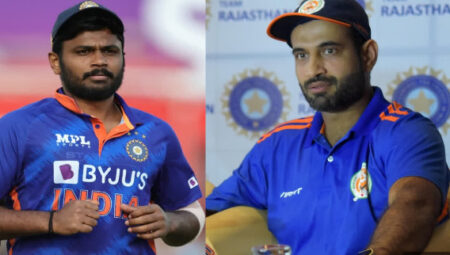At the 2021 T20 World Cup in the United Arab Emirates, the average Powerplay total was 40.83, and thus far in the 2022 World Cup, including the match between Pakistan and Zimbabwe on October 27, it is 39.21.

The T20 International showcase competition is making its debut in Australia, for the very first time. The current incarnation of the Twenty20 World Cup got one month underway, before the beginning of the official international cricket season in Australia. Midway through November is often when cricket season begins in Australia.
Following a string of four consecutive world cups held on the subcontinent, this year’s competition takes place in entirely new environments. There has been a noticeable amount of variety among the approaches used by the teams, so far.
Powerplay struggles-
The average Powerplay total during the 2021 Twenty20 World Cup, which was held in the United Arab Emirates, was 40.83, whereas the average Powerplay total during the 2022 World Cup, which includes the match between Pakistan and Zimbabwe on October 27, is currently 39.21.
In the first ball that Pakistani captain, Babar Azam faced during the India-Pakistan match in Melbourne, Arshdeep Singh, left-arm pacer produced a delivery that seamed back into Babar Azam. He had LBW treatment conditions for T20Is that had never been experienced before, particularly during World Cups.
The Sri Lankan openers Pathum Nishanka and Kusal Mendis in the Australia-Sri Lanka match in Perth struggled against the Australian pace batteries.
Better line and length
Zimbabwe beat Pakistan in a last-over thriller. Long, long. Brad Evans shot hard length for three of his final four balls after getting hammered for 3 and 4 with fuller (slower) balls. Zimbabweans shouted and rejoiced.
South African cricketer, Dale Steyn told Sky Sports that bowlers should prioritize length over the line. Depending on the bounce of the pitch, what is a good delivery in India may be hittable in Australia.
Haris Rauf, a Pakistani pacer who bowled and got hit two brilliant sixes by Virat Kohli in the 19th over of the Pakistani bowling innings was the most skilled. But when both Pakistan and India were under pressure from the 16th over to the 19th over, both fast bowlers slowed down their throws. Instead of trying to get the Indian batters to move back, which was hard for both of them, they tried 11 slower ones. If you want to get wickets, you can’t put too much faith in slower players. Both of Virat Kohli’s sixes were hit on slow balls.
The crucial role of an anchor in an innings-
Players like Babar Azam and Mohammed Rizwan have been getting a lot of criticism lately for taking their time and being steady when they bat.
At SCG, where Australia was playing, Devon Conway got 92 runs. Shan Masood scored 52 runs off 42 balls in the first half of the same game against Pakistan at MCG before Virat Kohli scored 82 runs off 53 balls.
Aaron Finch’s 31(42) Australian skipper played slow innings against Srilanka, he showed more about the captain’s form than his intention to finish the innings. Still, he stayed strong to see his side through. Teams always try to keep the same player in the middle so that he can keep the innings steady while the rest of the team can come in and attack. We’ll probably see more of them in the coming days.
Read More: Shoaib Akhtar wants Virat Kohli to retire from the T20Is












